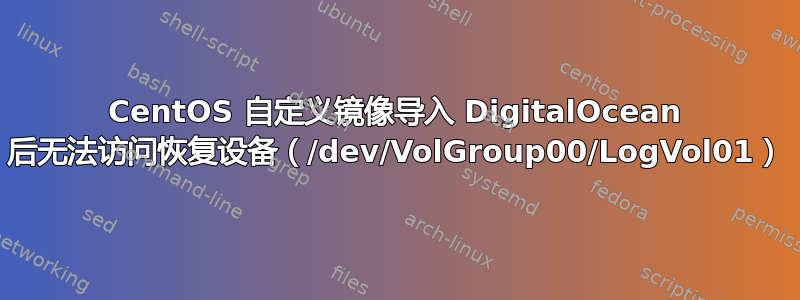
我正在尝试从 VMware 环境导入现有的 CentOS VM,以通过其自定义映像选项在 Digitalocean 上运行。我能够在 VMware Workstation 和 VirtualBox 中成功运行 VMDK。我尝试使用 VMDK 本身,并将 VMDK 从 VirtualBox 克隆为 VDI 格式,然后将其上传到 DigitalOcean 并恢复。恢复成功,但在启动期间,出现以下错误。:
root (hd0,0)
Filesystem type is ext2fs, partition type 0x83
kernel /vmlinuz-2.6.18.164.11.1.e15 ro root=/dev/VolGroup00/LogVol00 rhgb quiet
[Linux-bzImage, setup=0x1e00, size=0x1d6b1c]
initrd /initrd-2.6.18-164.11.1.e15.img
[Linux-initrd @ 0x37cab000, 0x344acb bytes]
Memory for crash kernel (0x0 to 0x0) notwithin permissible range
WARNING calibrate_APIC_clock: the APIC timer calibration may be wrong.
PCI: PIIX3: Enabling Passive Release on 000:00:01.0
Red Hat nash version 5.1.19.6 starting
Reading all physical volumes. This may take a while...
Volume group "VolGroup00" not found
Unable to access resume device (/dev/VolGroup/LogVol01)
mount: could not find filesystem '/dev/root'
setuproot: moving /dev failed: No such file or directory
setuproot: error mounting /proc: No suck file or directory
setuproot: error mounting /sys: No suck file or directory
switchroot: mount failed: No such file or directory
Kernel panic - not syncing: Attempt to kill init!
Kernel alive
kernel direct mapping tables up to 120000000 @ 10000-16000
VM 在桌面虚拟机管理程序上工作和在 DigitalOcean 中启动之间经历的唯一变化是将 VMDK/VDI 文件压缩为 gzip,以提高上传效率。这是原因吗?还是更有可能的是桌面虚拟机管理程序和 DigitalOcean 基础设施之间的基础设施差异足以改变卷名称?
任何建议将不胜感激。


